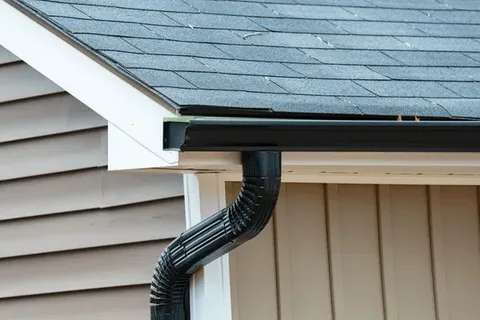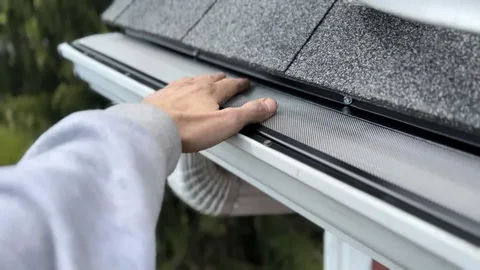A leaking roof is a homeowner’s nightmare, often leading to costly roof repairs and potential damage to the interior of the house. Identifying roof leaks early on can save you from extensive expenses and preserve the structural integrity of your home.
In this comprehensive guide, we will explore various ways to spot roof leaks or damage before they escalate into expensive home problems.
Regular Roof Inspections
The key to preventing expensive roof issues is regular inspections. Make it a habit to inspect your roof at least twice a year, ideally during the spring and fall. Look for any signs of damage, such as missing or damaged shingles, cracked flashing, or deteriorating seals around vents and chimneys.
Check the Attic
The attic is often the first place where signs of a roof leak become apparent. During your inspection, look for water stains on the ceiling and walls, as well as mold or mildew growth. Inspect the insulation for dampness, as wet insulation can be a clear indicator of a leak.
Examine the Shingles
Damaged or missing shingles are a common cause of roof leaks. Inspect your roof’s surface for any signs of shingle issues, such as curling, cracking, or granule loss. Pay close attention to areas where shingles are exposed, as these are vulnerable points that can allow water to penetrate.
Inspect Flashing and Seals
Flashing is a thin material installed around roof penetrations like chimneys, vents, and skylights to prevent water intrusion. Check the flashing for any signs of damage or deterioration. Additionally, inspect the seals around these structures to ensure they are intact and providing a watertight barrier.
Clear Debris from Gutters
Clogged gutters can lead to water backup, which can then find its way under your roofing materials. Regularly clean your gutters to prevent debris buildup, ensuring that rainwater can flow freely off your roof. This simple maintenance task can go a long way in preventing leaks.
Look for Water Stains
Inside your home, water stains on ceilings or walls can be a clear sign of a roof leak. Investigate the source of the stain and trace it back to the point of entry on the roof. Early detection can help you address the issue before it causes extensive damage.
Monitor the Roof during Storms
Storms can exacerbate existing roof issues or create new ones. Pay attention to your roof’s performance during heavy rain or windstorms. Inspect your attic and ceilings afterward for any signs of water infiltration. Timely intervention during or after a storm can prevent minor issues from turning into major problems.
Check for Algae or Moss Growth
Algae and moss not only detract from your roof’s aesthetic appeal but can also compromise its integrity. These organisms retain moisture, accelerating the deterioration of roofing materials. Regularly clean your roof to remove algae and moss, and consider installing zinc or copper strips to inhibit their growth.
Inspect the Chimney
The chimney is a common source of roof leaks. Check the mortar and flashing around the chimney for any cracks or gaps. Ensure that the chimney cap is in good condition and securely in place. A well-maintained chimney is crucial for preventing water from seeping into your home.
Address Ice Dams in Winter
In colder climates, ice dams can form on the roof, leading to leaks. Proper insulation and ventilation in the attic can help prevent ice dams. Additionally, use a roof rake to remove snow buildup, reducing the risk of ice dams and subsequent leaks.
Check for Sagging Areas
Inspect your roof for any noticeable sagging or dips. These areas may indicate water accumulation, suggesting a potential leak. Sagging can compromise the structural integrity of your roof, making it crucial to address the issue promptly.
Investigate Discolored or Warped Roofing Materials
Discoloration or warping of roofing materials can be a visible sign of water damage. If you notice any changes in the appearance of your roof, investigate the cause immediately. Discolored or warped materials may need to be replaced to maintain the roof’s effectiveness in keeping water out.
Monitor the Age of Your Roof
Like any component of your home, the roof has a finite lifespan. Knowing the age of your roof can help you anticipate potential issues. If your roof is approaching the end of its expected lifespan, be extra vigilant in your inspections and consider proactive measures such as roof replacement or major repairs.
Address Issues Promptly
Time is of the essence when it comes to roof leaks. If you notice any signs of a potential issue, address it promptly. Delaying repairs can allow the problem to worsen, leading to more extensive damage and higher repair costs. Quick action is key to preventing minor leaks from turning into major headaches.
Consult Professionals
While DIY inspections are valuable, consulting with roofing professionals can provide a more thorough assessment. Schedule periodic professional inspections to ensure that no hidden issues are overlooked. Experienced roofers can identify potential problems early on and offer expert advice on maintenance and repairs.
Consider Roof Coatings
Roof coatings can provide an additional layer of protection against leaks. These coatings are designed to seal and protect the roof, making it more resistant to water infiltration. Consult with a roofing professional to determine if a roof coating is a suitable option for your specific roofing material and conditions.
Maintain Proper Ventilation
Adequate ventilation in the attic is essential for preventing moisture buildup, which can contribute to roof leaks. Ensure that your attic is well-ventilated to promote air circulation and prevent condensation. Proper ventilation not only helps in leak prevention but also extends the life of your roofing materials.
Check for Loose or Damaged Roofing Material
Loose or damaged roofing materials, such as shingles or tiles, create vulnerable points where water can infiltrate. During your inspections, pay close attention to the condition of individual roofing components. Replace any loose or damaged materials promptly to maintain the integrity of your roof.
Educate Yourself on Roofing Materials
Different roofing materials have unique characteristics and vulnerabilities. Educate yourself on the specific type of roofing material used on your home. Understand its expected lifespan, common issues, and recommended maintenance practices. This knowledge will empower you to take proactive steps in preserving your roof’s health.
Conclusion
Preserving the integrity of your roof requires a combination of diligence, knowledge, and timely action.
By incorporating regular inspections, utilizing technology, and addressing issues promptly, you can spot roof leaks before they evolve into expensive problems. Whether you choose to conduct DIY inspections or seek professional guidance, a proactive approach to roof maintenance will pay dividends in the long run. Remember, a well-maintained roof not only protects your home but also safeguards your investment and provides peace of mind for you and your family.




